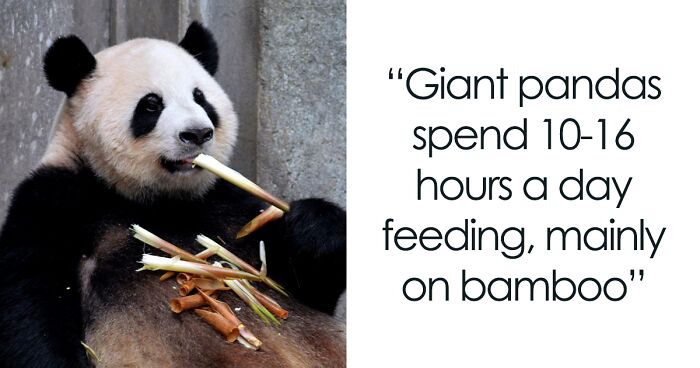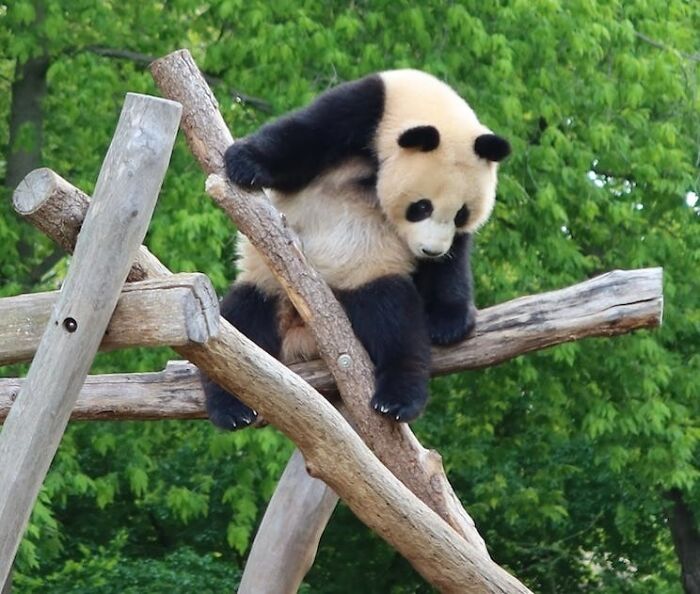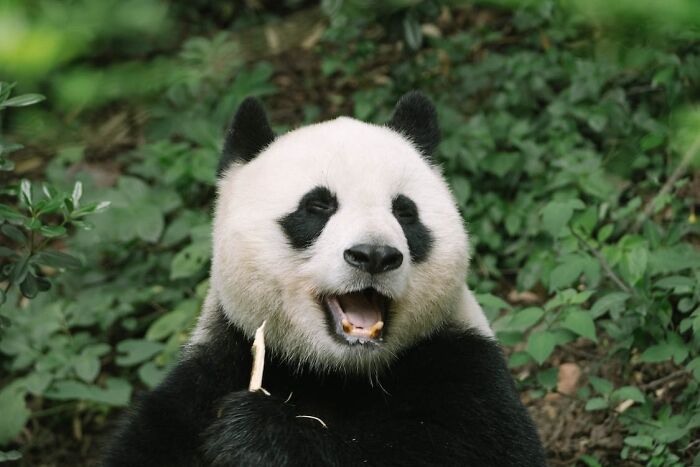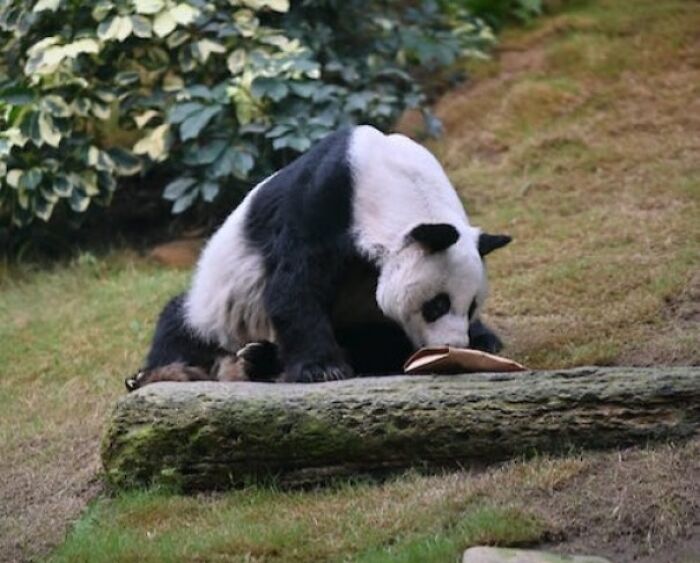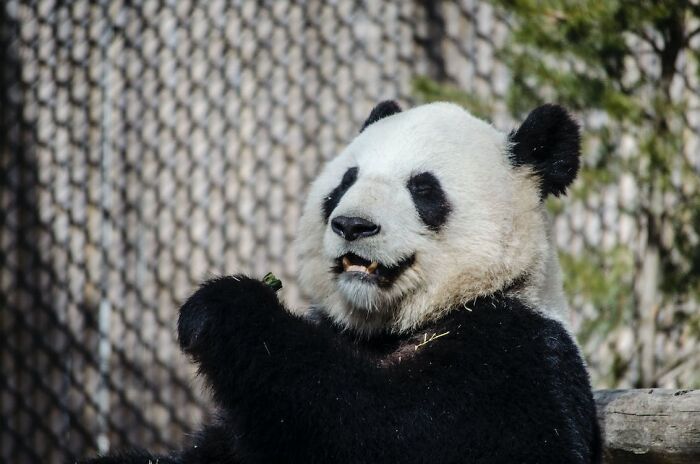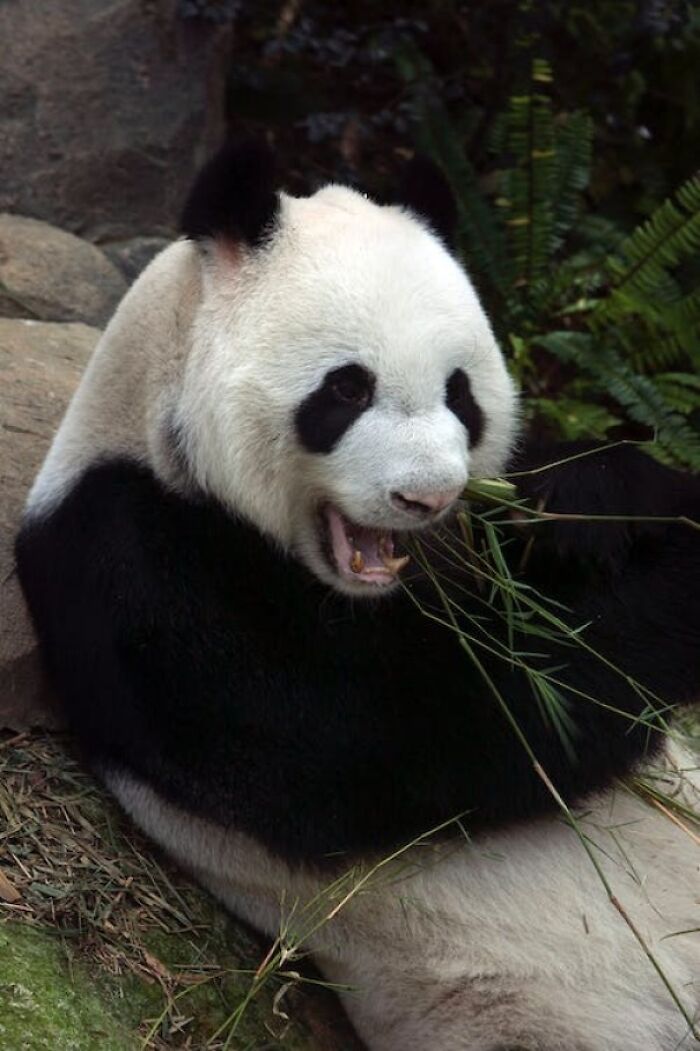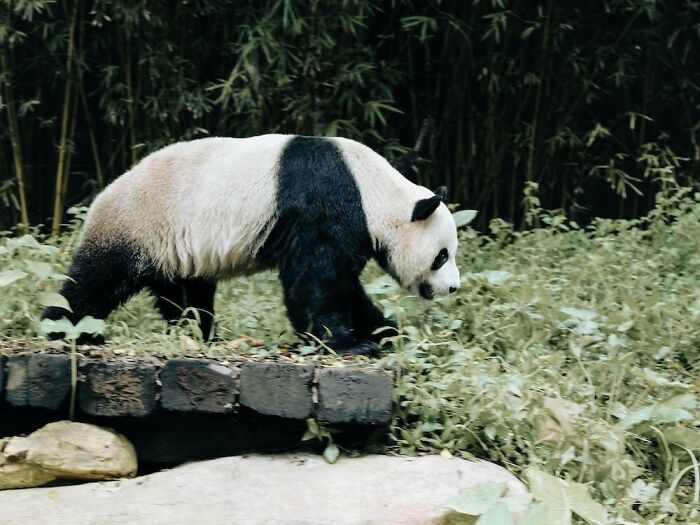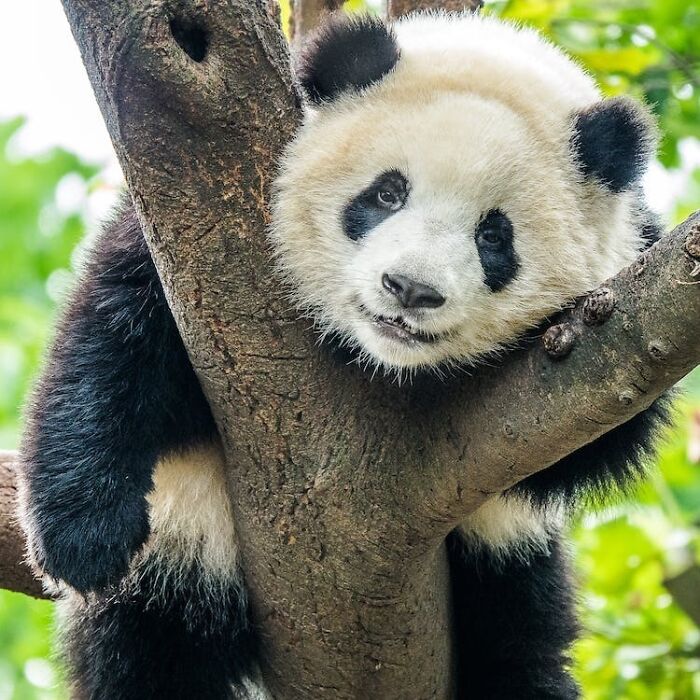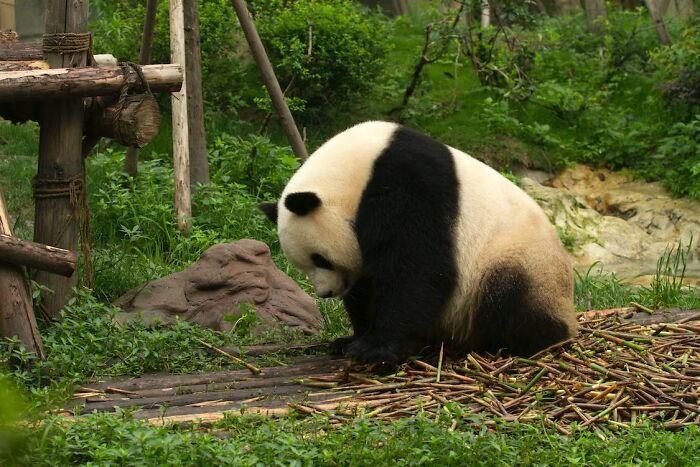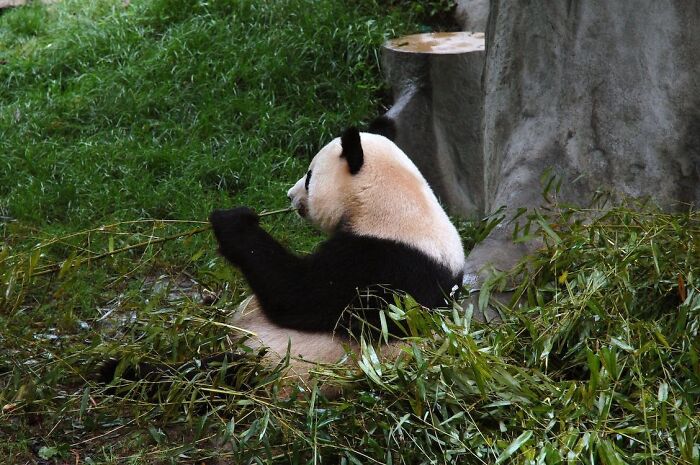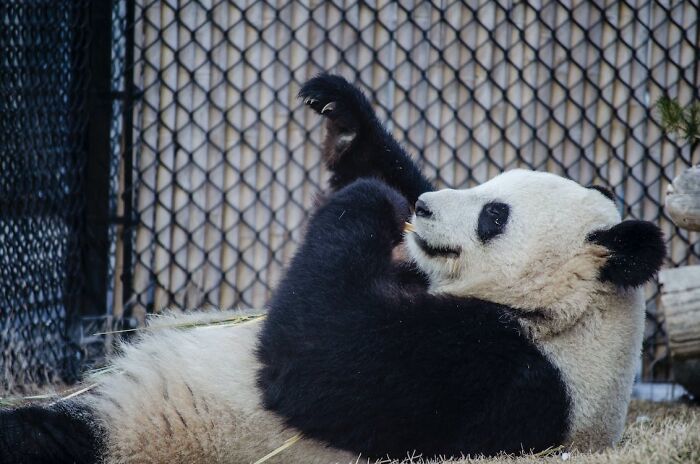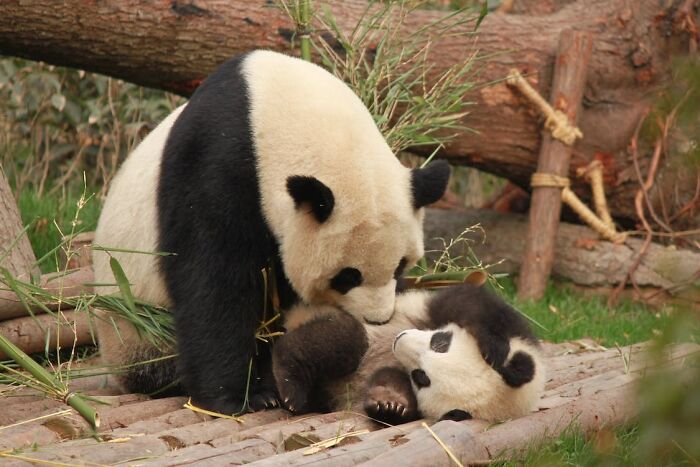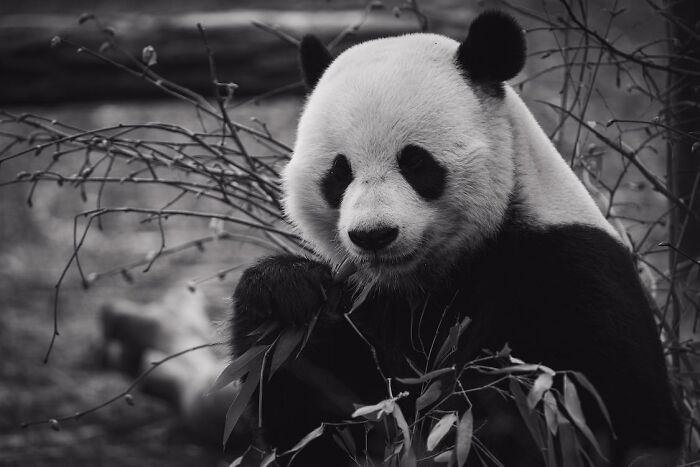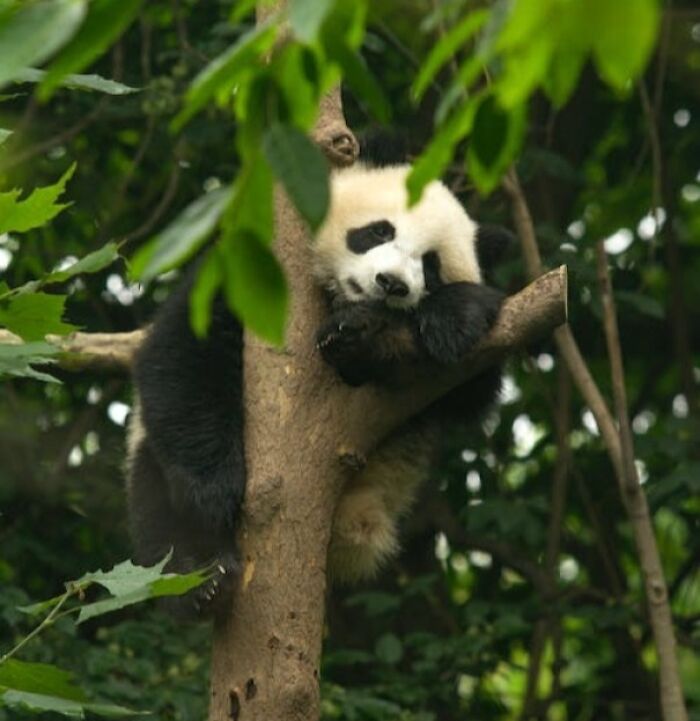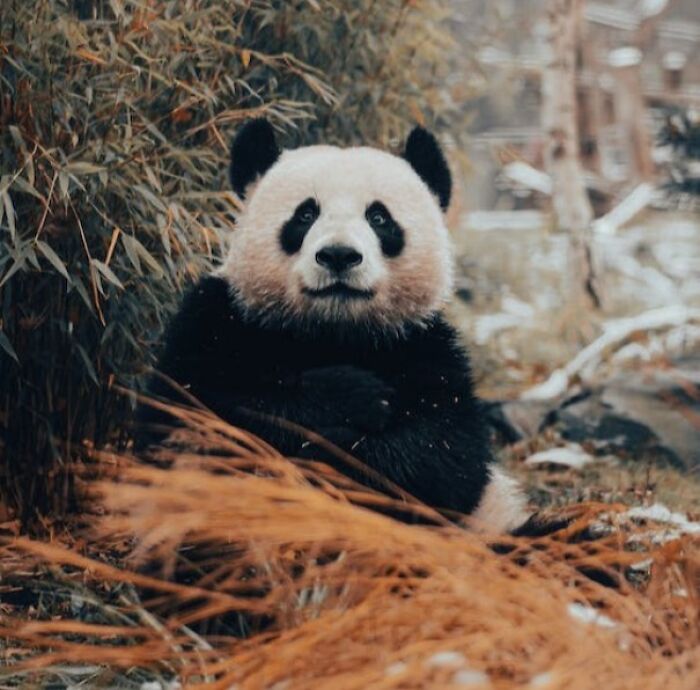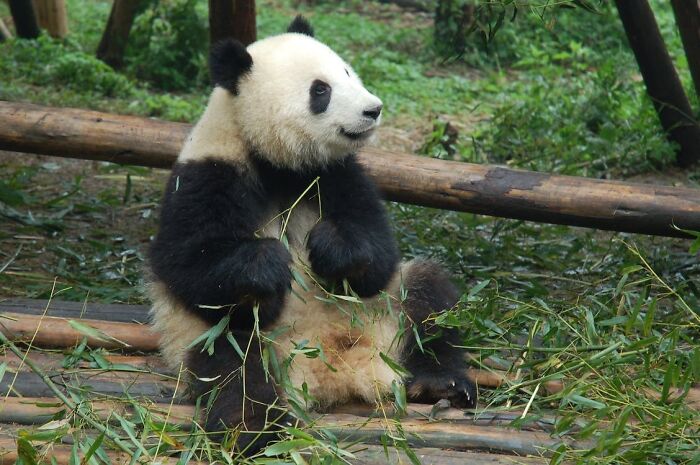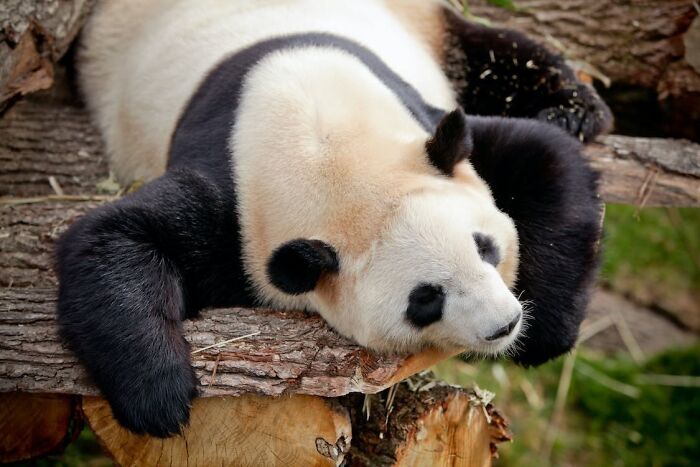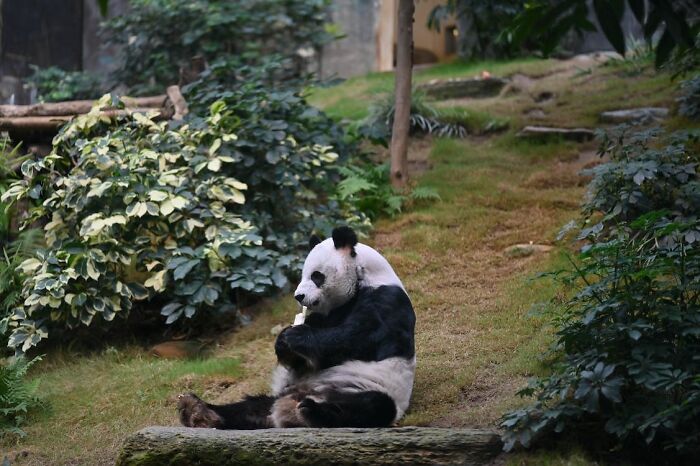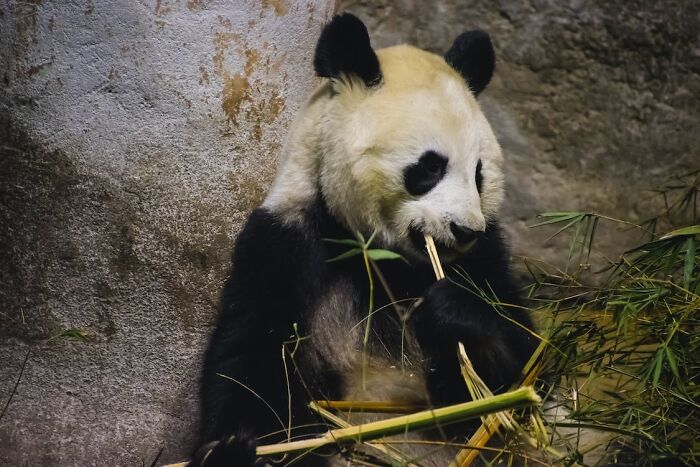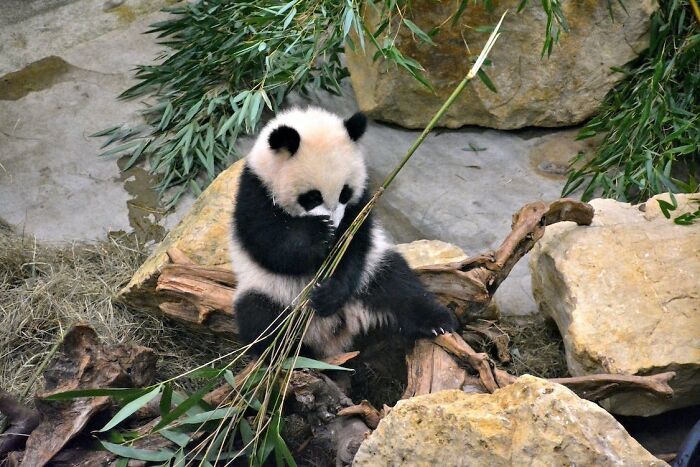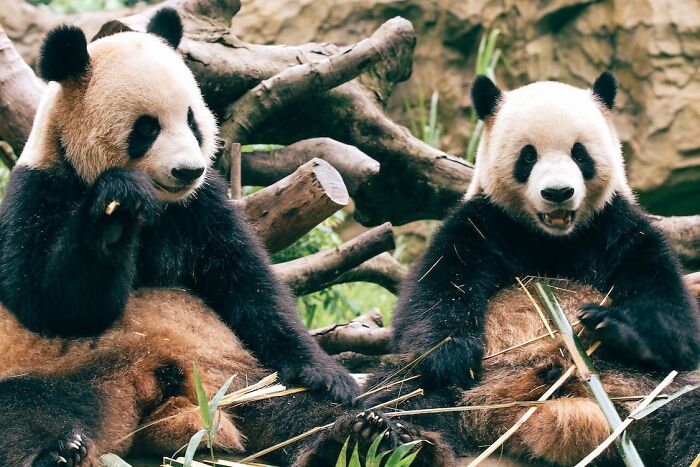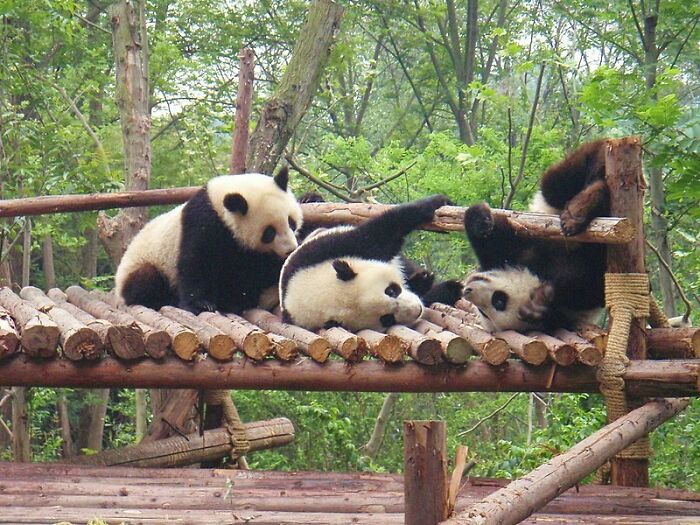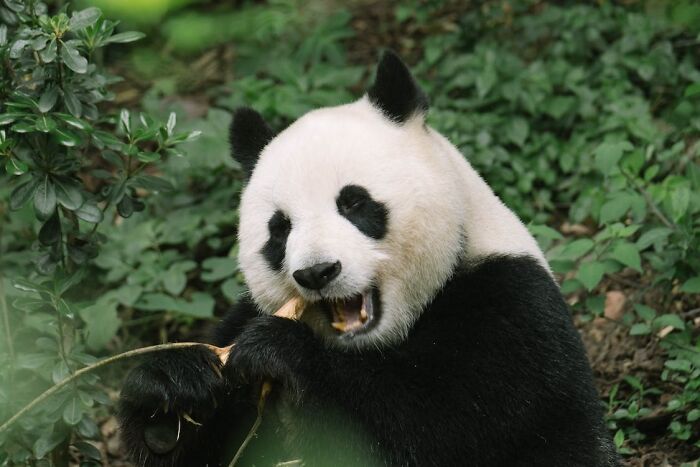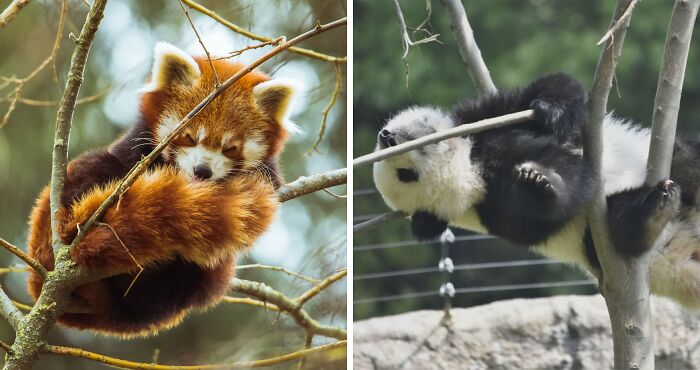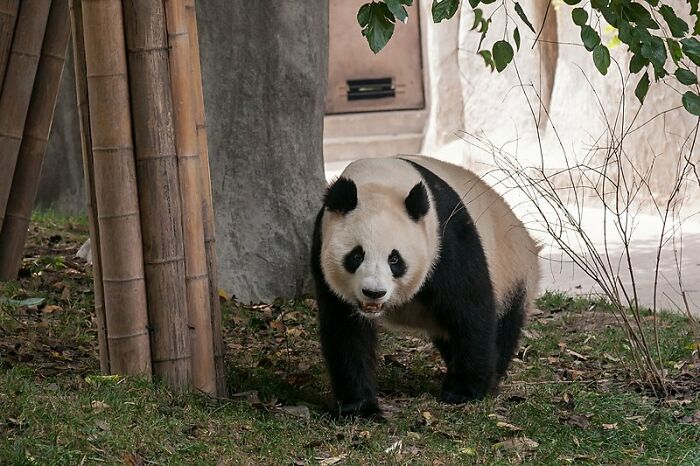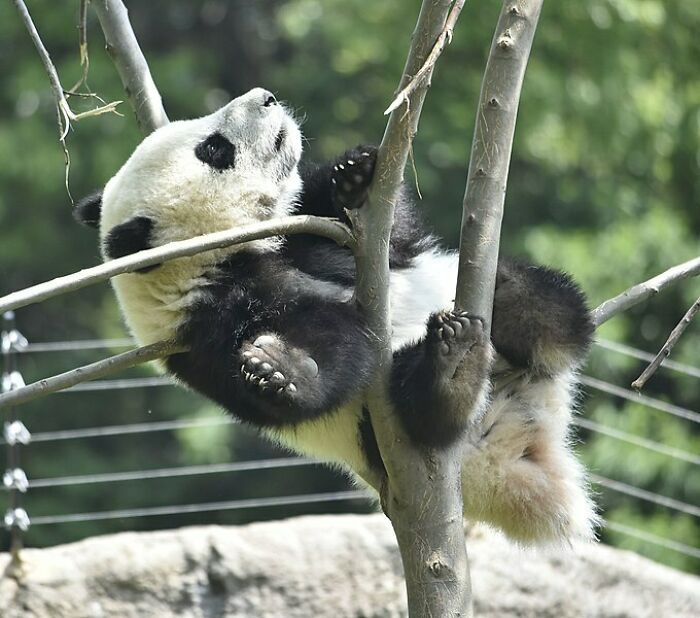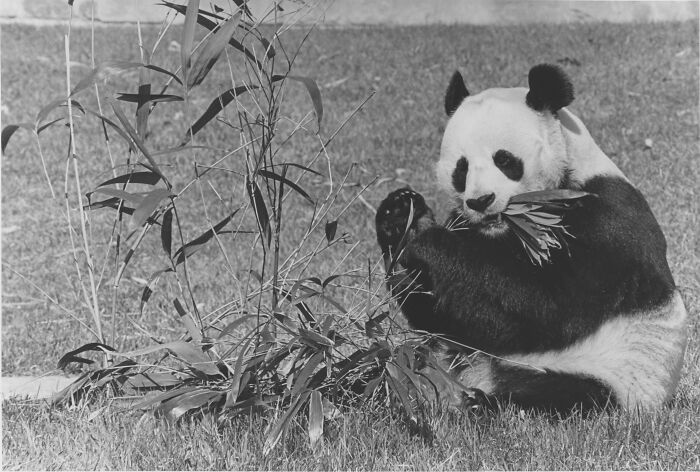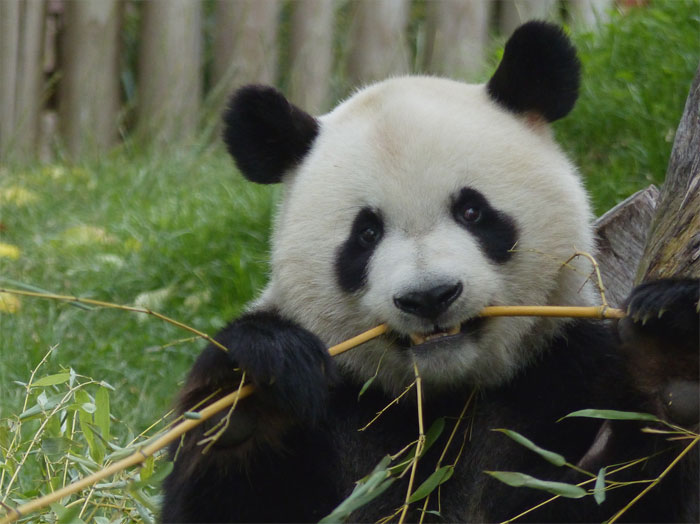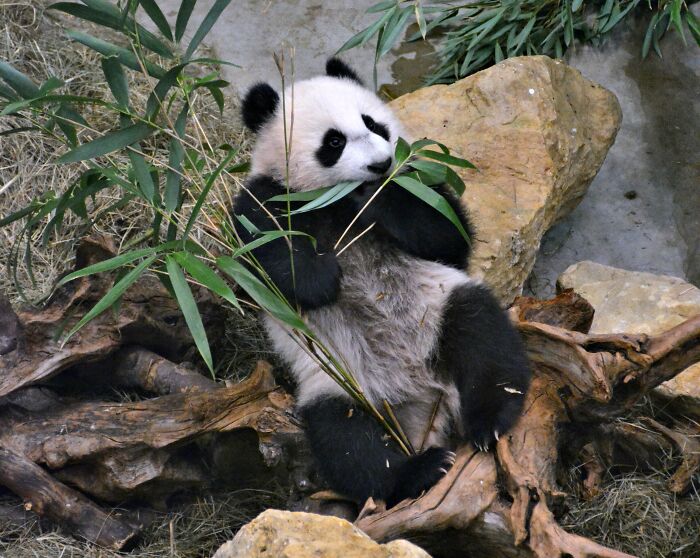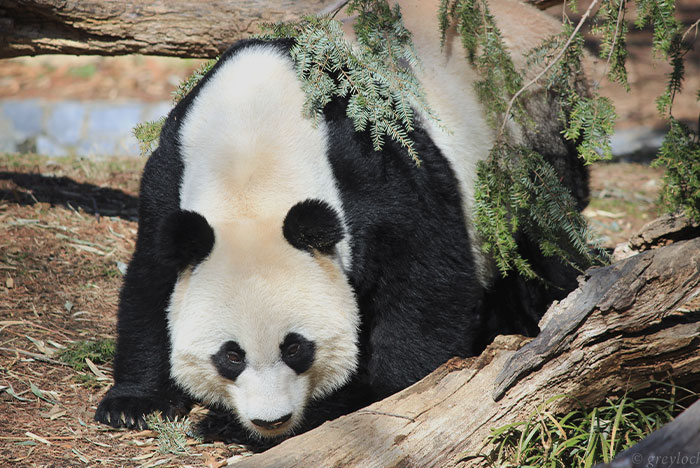No, this article is not about the Bored Pandas, though thank you for your interest. We can’t believe ourselves that it took us so long to write an article about the fluff balls of cuteness that gave us our name. But as they say, better late than never, so we went ahead and collected a bunch of interesting panda facts.
There has been a lot of argument around whether a giant panda is a bear or belongs to another family of animals altogether. Scientists confirm that a panda is, in fact, a bear, that’s why it is also often called a panda bear.
If there was an official ranking for the most adorable animal on the internet, the black and white teddy bears would definitely make it into the top five. Because let’s be honest, have you ever managed to scroll past cute panda pictures without going “Aww!” Yeah, thought so. Watching pandas in real life is even more fun. They might have the reputation of slow and clumsy animals, but in the right conditions, they do know how to entertain themselves. Their younglings, also known as panda cubs, are full of mischief at any time of the day when they are not munching on bamboo or taking a nap.
So if you love pandas as much as we do, head over to the facts below to learn all about pandas and their cute ways. Do you know any other facts you want to share with us? Tell us in the comments!
This post may include affiliate links.
There Are Two Giant Panda Subspecies
Giant pandas may be seen in Qinling and Sichuan. Only 18.5 percent of giant pandas are found in the Qinling region. The giant pandas' appearance, colors, and body shapes differ between Sichuan and the Qinling Mountains because to differences in the soil, temperature, and vegetation in each region.
The Sichuan big panda has a head that resembles a bear, whereas the Qinling huge panda has a smaller skull and broader fangs, giving it more of a catlike appearance.
The two pandas share the same origin, but they are secluded from one another by a vast river, mountains, and human activity. According to paleontologists, they lost touch 50,000 years ago, at which point they started evolving and reproducing on their own.
*Panda uses andcestry and finds out that his 1.7e*3 removed cousin is a subspecies of panda he had n idea existed*
Pandas Are Loners
The giant panda lives alone. They have their own area in the wild, and they defend it from other pandas. That's because big pandas eat bamboo, which eliminates the necessity for coordinated hunting. To achieve their nutritional requirements, they must consume a lot of bamboo. Conflict over access to adequate bamboo would prevent giant pandas from coexisting peacefully in groups, which would be detrimental to their overall survival.
A panda typically need its own bamboo forest, which is 3–8 square kilometers (1-3 square miles) in size, to exist.
Pandas Need At Least 2 Different Bamboo Species In Their Range To Avoid Starvation
Giant Pandas Are No Longer Endangered
Their number has increased to about 2,200 as a result of conservation initiatives to safeguard giant pandas. There are now 1,864 giant pandas living in the wild and 422 of them were born in captivity. This has changed their threat level from "endangered" to "vulnerable".
Giant Pandas Spend 10-16 Hours A Day Feeding, Mainly On Bamboo
The Giant Panda’s Scientific Name Is Ailuropoda Melanoleuca, Which Means “Black And White Cat-Foot”
Adult Pandas Are About 150cm Tall
Pandas Can Swim And Even Climb Trees
Giant pandas are superb tree climbers and swimmers. Giant panda babies begin to climb about 5 months old, often by climbing on their mother.
Aside From Bamboo, Pandas Eat Eggs And Rodents Too
A panda's diet is 99% vegetarian, consisting primarily of bamboo roots, stems, shoots, and leaves. However, because they have a carnivorous digestive system, the remaining 1% of their diet might include eggs, small animals, and carrion. Pandas have also been observed foraging on pumpkin, kidney beans, wheat, and domestic pig chow in farms.
Unlike Other Bears, Pandas Do Not Hibernate
Because of their bamboo-based diet, giant pandas cannot store enough fat to hibernate through the winter.
The cold is not a fear for pandas, though. They may be seen strolling through bamboo forests covered in heavy snow even in temperatures as low as -4°C (25°F).
A Panda Year Is Roughly Equivalent To Three Human Years
In terms of lifespan, a panda year is comparable to around three human years. Giant pandas may live up to 25 or 30 years in captivity and 18 to 20 years in the wild. The 38 years and four months old giant panda known as Xinxing (also known as "New Star") lived at the Chongqing Zoo (1982–2020). That is the same as 115 years in human years.
Cubs Are Well Protected In Their First Month
The distinctive black-and-white markings of the giant panda serve two purposes: concealment and communication. The panda's face, neck, belly, and rump are all white to help it conceal in snowy environments. The dark arms and legs help it camouflage in the shade.
Pandas Have Excellent Camouflage For Their Habitat
Pandas Sometimes Do Handstands When They Wee
Pandas may often climb a tree backwards with their hindfeet until they're in a full handstand upside down, allowing them to leave their smell higher up.
I would suggest they cartwheel instead, to increase the surface area of their smell, instead of just the height.
Panda Have Slits As Pupils, Like Cats
One feature of Panda Bears that gives them the nickname "Cat-foot" is that their eyes are slits like cat eyes. They have slits for pupils rather than spherical pupils like other bears. This adaptation allows them to see well at night. This is advantageous since they are constantly looking for food, even at night.
Giant Pandas Can Poop 40 Times A Day
Other animals' food stays in the stomach for more than a day, whereas bamboo in the intestines of giant pandas only stays for 8 to 12 hours, with the shortest bamboo shoots. In the panda home, you may observe pandas eating and pooping at the same time.
Pandas Have 6 "Fingers"
The sixth "finger" of a panda resembles a human thumb. In reality, it is an unique wrist bone or opposable paw heel with powerful muscles but no moveable joints that serves the same purpose as a thumb and can hold food.
Pandas Are Found In Thick Bamboo Forests, High Up In The Mountains Of Central China
Pandas Use Scent To Mark Their Territory
Giant pandas use a variety of methods to mark their territory, including rubbing their smell glands on tree bark and peeing on it. A typical guideline among pandas is that they are stronger the higher they can place their scent marks on a tree.
Reminds me of my dog, who once walked on the rim of a small creek bridge, then peed on it. Goofball.
Baby Pandas Are Born Pink And Measure About 15cm
Female Pandas Give Birth To One Or Two Cubs Every Two Years
Giant panda cubs can spend up to three years with their moms before venturing out on their own.
Pandas Will Abandon A Child If They Have Twins
While pandas in captivity are more likely to produce twins, wild pandas often only have one child. If a mother panda has two babies in the wild, she will only feed the one she perceives as being stronger. The other is left on its own to manage.
A newborn cub is incredibly frail, which is why this is the case. At roughly 12 months of age, cubs begin eating bamboo, but up until that point, they are entirely reliant on their mother. Therefore, in the wild, mother pandas lack the milk and energy needed to care for two babies.
Spring Is The Mating Season For Pandas
Only two to three days each time, in March to May on average each year, the female giant pandas go into heat. An average pregnancy lasts five months.
While male giant pandas would leave scent markers as a sign to attract female giant pandas, female giant pandas will make distinctive noises like baa, dog bark, or cow bark during their reproductive time in the wild.
Giant Pandas And Red Pandas Are Not Closely Related
Despite a similar name, giant pandas belong to the bear family Ursidae, whereas red pandas are the sole extant members of their taxonomic family, Ailuridae.
Giant Pandas Can Experience Pseudopregnancy
Instead of giving birth at the conclusion of a pseudopregnancy, which imitates a true pregnancy, the hormones and behaviors of a giant panda revert to normal. There are estimates that Mei Xiang of Smithsonian's National Zoo had at least six false pregnancies.
Most Giant Panda Cubs In The World Leave For China Before They Turn 4
The majority of giant pandas in the world are on loan from China, and cubs born outside of China must be transferred to the Chinese breeding program in order to increase the gene pool.
Greatest Threat To Wild Giant Pandas Is Habitat Loss
Smithsonian's National Zoo's First Giant Pandas Were Ling-Ling And Hsing-Hsing
After First Lady Patricia Nixon expressed her admiration for them at a banquet in Beijing, China, in 1972, Chinese Premier Zhou Enlai sent them as a gift to the American people.
Giant Panda's Bite Is Incredibly Strong
Its bite was in third place among the examined live species with a BFQ (Bite Force Quotient) of 151. Giant Panda is one of the few carnivores that primarily feed on vegetation, specifically bamboo, a fibrously stiff plant that requires vigorous chewing. The panda's biting force has little to do with the size of its meal.
Much Of What Pandas Eat Is Passed As Waste
The digestive tract of a giant panda is more like that of a carnivore than a herbivore, and a lot of the food it consumes is passed on as waste.
Mei Xiang, Tian Tian And Their Cub Will Stay At Smithsonian's National Zoo Until 2023
The Zoo's adult panda pair, Mei Xiang and Tian Tian, arrived in 2000. A contract with the China Wildlife Conservation Association stipulates that the couple and their youngster would remain at the zoo until 2023.
I disagree with the existence of pandas (the animal). They are literally evolving themselves to death. They have to eat so much bamboo because it doesn't provide enough nutrients and they can't digest it properly. Their mating issues are another thing entirely. They like the males to fight for weeks for a female - while she is only fertile for a few days at a time. This is why they often won't breed in captivity because there is no fight to prove their mate is worthy. They have a single cub who is so underdeveloped that they often die before maturing. For more info - Google the problems with pandas
I disagree with the existence of pandas (the animal). They are literally evolving themselves to death. They have to eat so much bamboo because it doesn't provide enough nutrients and they can't digest it properly. Their mating issues are another thing entirely. They like the males to fight for weeks for a female - while she is only fertile for a few days at a time. This is why they often won't breed in captivity because there is no fight to prove their mate is worthy. They have a single cub who is so underdeveloped that they often die before maturing. For more info - Google the problems with pandas

 Dark Mode
Dark Mode 

 No fees, cancel anytime
No fees, cancel anytime 



